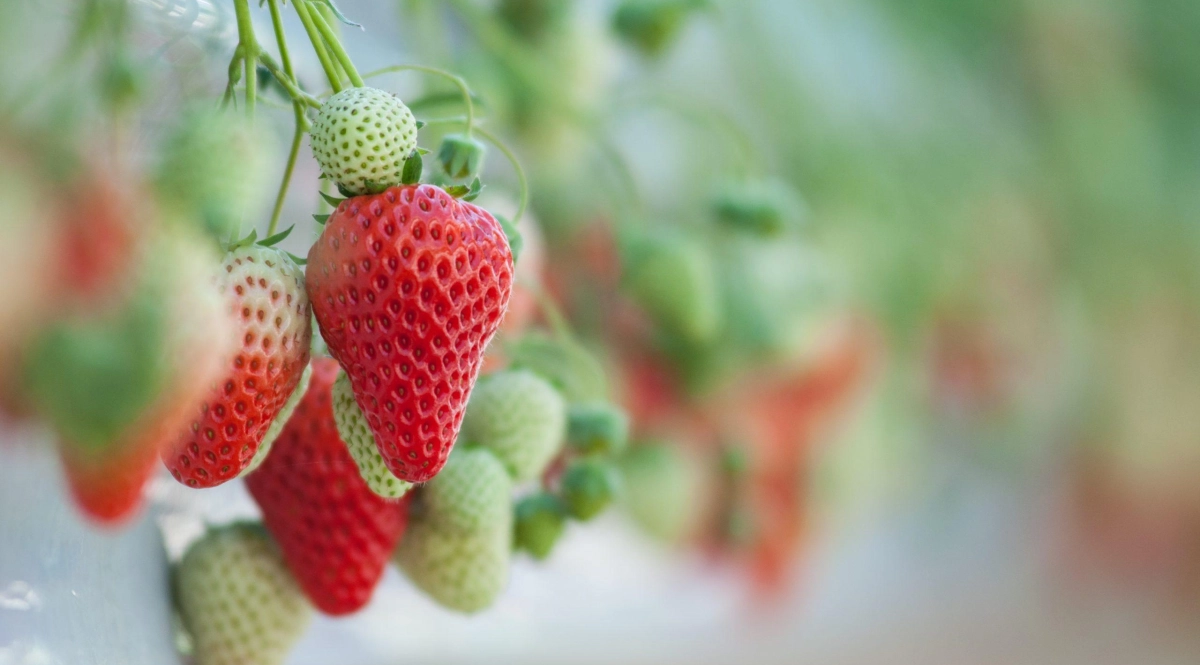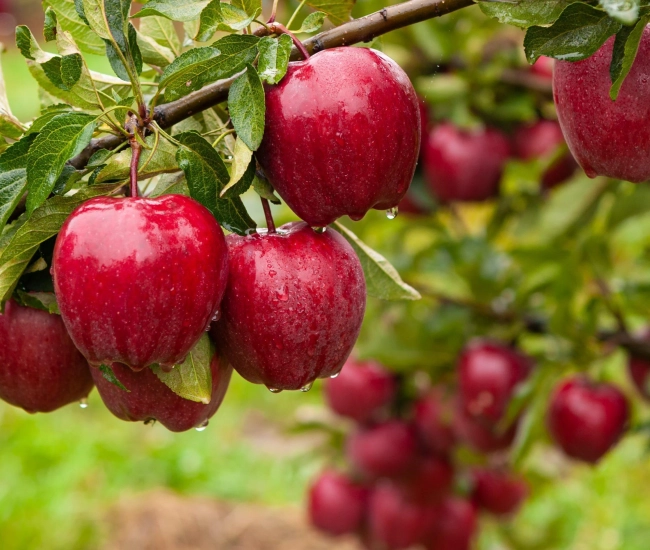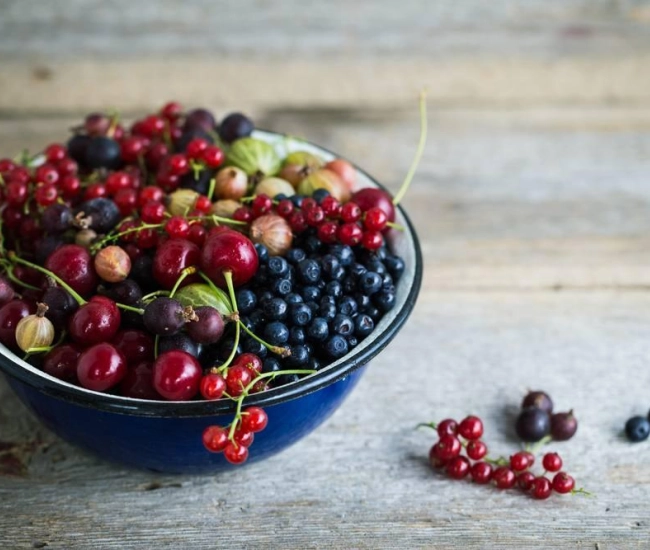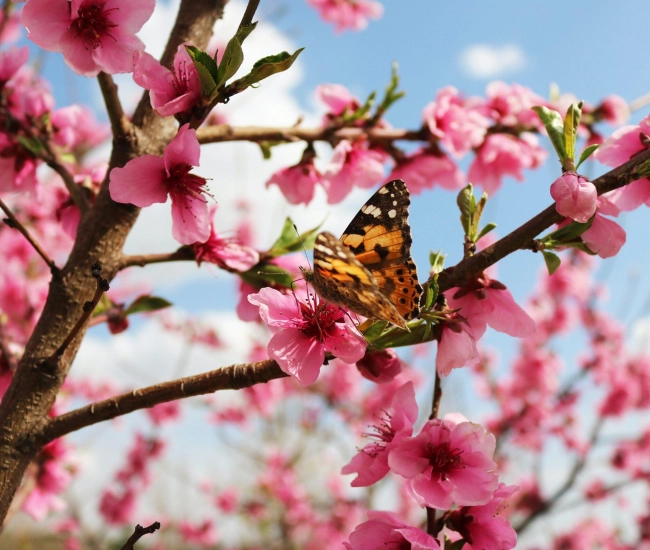
In jam, sorbet, "shortcake" or bitten directly from the plant with big bites, strawberries: we love them! This small sweet and slightly tangy fruit brings joy to young and old alike all over the world. Strawberries are as good to taste as they are healthy. Indeed, these bright red berries are packed with vitamin C, rich in antioxidants, and are an excellent diuretic. It's even said that applying strawberry compresses to the face helps fight wrinkles... but we'll let you verify that for yourself!
Growing strawberries at home is quite simple. Strawberry plants are hardy and vigorous, capable of producing well in optimal conditions. You can plant strawberries in open ground, in flower beds, or in the vegetable garden, but they also do very well in pots: hanging, geotextile, multi-opening, grow bags, and others. Here are our best tips for successfully growing your strawberries at home.
A little botany first
There are different types of strawberries, each comprising hundreds of varieties. Strawberry plants are perennials, and the best-suited cultivars can withstand our Quebec winters if well prepared. Normally, after 3 to 4 years, the plants are exhausted, and it is better to replace them to ensure optimal production.
Strawberry plants reproduce by stolons, which are shoots that emanate from the mother plant and root upon contact with the soil to form new strawberry plants. Stolons demand a lot of energy from the plant and may hinder your production. If you don't cut them, they will quickly invade. Stolons will root too close to the mother plant and won't be effective. It's preferable to remove them regularly unless you wish to multiply your strawberry plants. In that case, you will need to take great care of your stolons and move them when they are rooted. You can even root them in small pots placed near the plant to make the task easier: stolons root where they touch the ground.
Choosing your strawberry plant
We are primarily interested here in three types of strawberry plants: everbearing, non-everbearing, and continuous. Your needs and availability at your local Passion Jardins garden center will mainly dictate your choice. You can mix the different types, as they coexist very well together, and you will have a maximum of fresh strawberries to eat or cook as you wish.
Everbearing strawberries
Everbearing strawberries produce fruit twice during the growing season. They flower and produce fruit first in June/July, then again later. Their production is less than non-everbearing strawberries, and the fruits are smaller, but they allow for two harvests annually.
Non-everbearing strawberries
Non-everbearing strawberries are sensitive to day length and thus produce only once a year, for about 2 to 3 weeks. They produce a good amount of large, delicious fruits. They are probably the most popular strawberries. Depending on the cultivar, they will produce fruit either early in the season or later, towards the end of July, but only once.
Continuous strawberries
As their name suggests, continuous strawberries are not affected by day length and produce throughout the season until frost. They are sometimes more challenging to find.
Planting and caring for strawberries
Strawberries appreciate the sun and a rich, well-drained soil. Whether you plant in pots or open ground, make sure to offer as much sunlight as possible to your small fruits if you want them to yield the best results.
Amend the soil with Passion Jardins marine compost to enrich it and nourish your young plants well. Then plant your strawberries neither too deep nor too shallow. The crown of the plant, where the leaves begin, should be at the same level as the soil. If buried, your plant risks rotting, and if it sticks out, it will dry out.
Water deeply. Young strawberry plants are fragile to heat and lack of water. Make sure to water them regularly when the soil is dry on the surface. Be careful not to overwater, as strawberries don't like to be waterlogged. If you have heavy soil that drains poorly, it would be better to plant your strawberries on a mound or opt for pot cultivation.
To ensure the good health of your plants and obtain beautiful, juicy red fruits in good quantity, fertilize with Passion Jardins natural fertilizer for vegetable gardens and fruits following the manufacturer's instructions.
Should strawberries be mulched?
First, know that strawberry plants do not like competition from weeds at all. Make sure to always keep their environment clean. Mulch, particularly straw, is ideal for limiting weed growth. Moreover, it keeps the soil at a good temperature and moisture level and prevents the fruits from touching the ground, which promotes rot. So yes, mulching strawberries is an excellent idea.
It's also thanks to a good protective layer of straw that your strawberry plants will survive the cold winters. You will indeed need to cover them before the snow to protect them from frost.
Harvesting and storing strawberries
Harvest strawberries when they are well and uniformly red. Do not delay picking them to avoid rot, and pick them in the morning when their taste is sweeter.
Strawberries only keep for a day or two in the fridge. Avoid washing them until you're ready to eat them and leave the stem in place so they stay firmer. You can freeze them, but note that their texture will change when served. However, they will be ideal added to your favorite recipes. You can also cook them into a coulis or jam or dehydrate them.

Strawberries are delicious, easy to grow, and bring joy to everyone! Start growing strawberries at home and enjoy them without restraint.
```
Tips and advice



